Flying any bird will require a lure - this should be appropriate for what type of quarry you are hunting. If you are hunting rabbits, you will want a lure resembling a rabbit to be drug on the ground. If you are hunting birds, you will want a feathered lure to swing in the air. These don't have to be exact replicas of the quarry, but many falconers take pride in creating very realistic and fancy lures. In reality, a stuffed glove can be put on a rope and used as a lure, but there are some more interesting lures to be made.
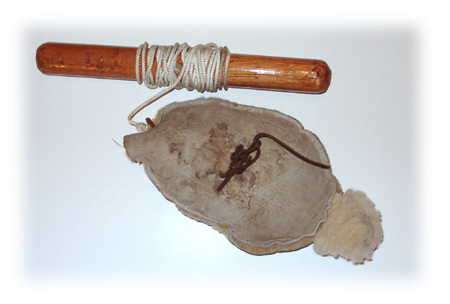 |
A simple rabbit lure. |
For lures to be used for stooping birds - a swinging lure
Two notes on lures - first, the lighter weight, the better. If you are using a pole lure, you can actually injure yourself from swinging this around too much. You'll be pulling fast and can end up pulling a muscle or ligament. A heavy weighted lure can also kill a bird if it hits her while she's flying. A light-weight lure will injure a bird far less if at all. Additionally, avoid any holes or metal (snaps, swivels, or clips) exposed on the lure itself. A bird that happens to strike this could catch a toe in it or could again injure herself. Getting a toe caught in a lure when the bird is going 90 - 100 mph means that you could kill the bird or rip a leg off if you aren't careful.
You will need:
- Awl with waxed nylon thread
- Leather covering to make a pocket
- Leather strap if you want to be able to garnish the lure
- Woven nylon or poly cord - 3' of cord; a fish stringer works well as the metal ring included provides a secure place for attaching the lines
- Swivel and snap
- Wings - for a Kestrel or Merlin, try quail, sparrow, pigeon, or starling; for a Peregrine or Gyrfalcon, try duck, pigeon, crow, or pheasant - many fly tying shops sell wings
- Epoxy
For a simple lure: Any two matching wings - two left wings, two right wings, or a left and a right wing of any species. Place the first wing on the table with the top side up. Place the second wing on the first wing with the top side up. Make sure the wing butts overlap, but that the tips are spaced apart.
For a spinning lure: two wings from the same side - two left wings or two right wings. The wings will be positioned so that the undersides of the wings are facing each other - the outside of the wings will be facing the outside. Place the first wing with the top placed down on a table. Place the second wing over the first with the top facing up, slightly askew so that the wing butts match, but the tips are slightly off. The advantage of the spinning lure is the appearance of beating wings - the alternating colors is exciting and there is a whirring sound created.
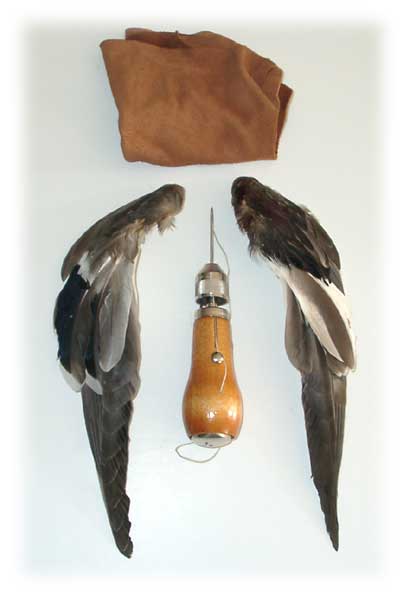 |
| Here I am using a matched set of duck wings to make a simple lure. |
- Start with the awl and the two wings. Start by punching through the wing butts and sewing the two wings directly together. When several places have been tacked together, tie off the threads and epoxy the knot.
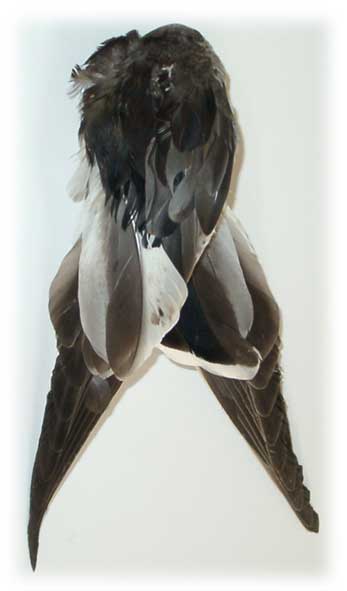
- Create a small leather pouch that will fit over the wing butts. All equipment will be hidden under this pocket. Sew up one side and down the other side so that three sides are closed. Pull down over the two wing butts to ensure they are covered well.
- Remove the pouch for a moment. If you want to have a leather strap exposed to garnish the lure, pass a leather strap between the two wings. Take the nylon cord and pass between the two wings and arrange so that it will pass directly out the tip of the pocket. If you like a swivel at the tip, arrange that so it is also hidden under the pocket, although this is not necessary. Punch one hole at the tip of the pocket for the lure line to pass through. Punch a second hole on one face of the pocket if you want a garnish strap.
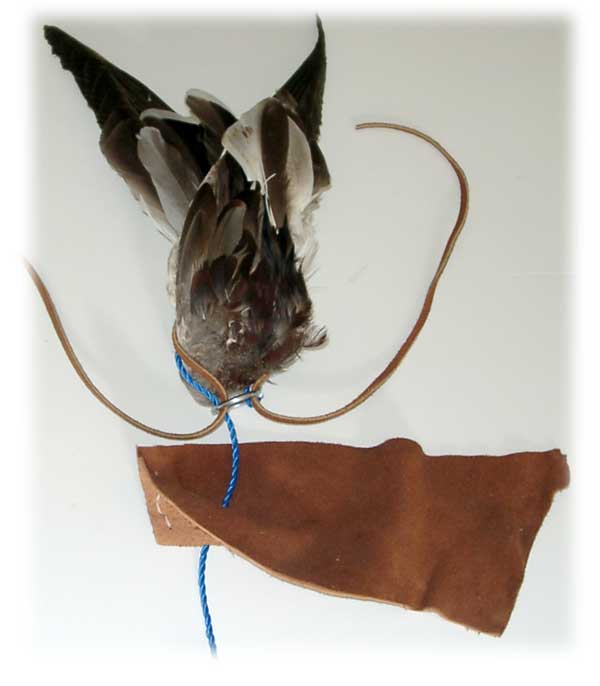
- Carefully pull the pocket back down over the wing butts. Pull the lure line through the tip and the garnish strap through the hole on the pocket's face. Fit the pocket as tightly over the wings as possible and sew into place. Knot all knots securely and finish with a drop of epoxy on each.
- Leave the lure line at least 1' - 1.5' of length coming out the tip of the lure. Place a swivel at the tip, and epoxy the knot in place. This distance will keep the swivel and metal fitting away from the bird when she is stooping.
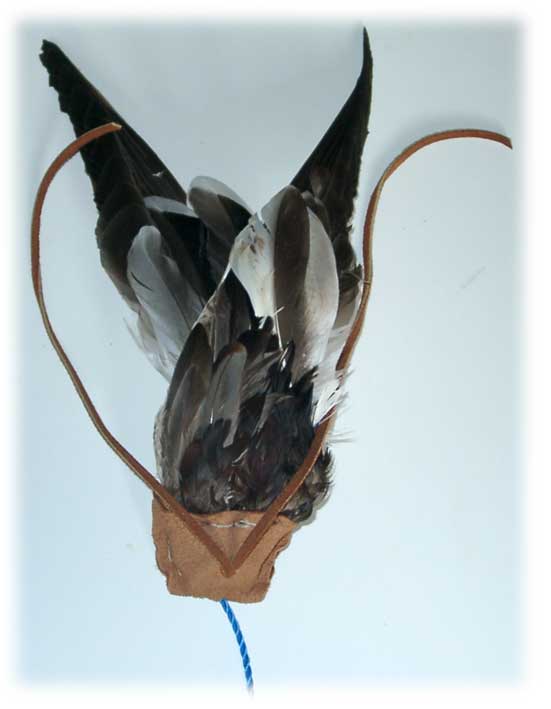
Kestrel/Merlin lure should be about 1 - 2 oz
TIP: To keep lures from smelling, tuck a dryer sheet in with them when storing.